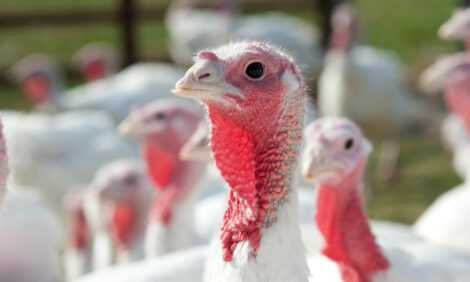



FAO building laboratory capacity for detecting animal diseases
Early detection of diseases is crucialEarly detection of diseases is crucial in innumerous ways. The same is true of early detection of animal diseases, which is fundamental towards not only safeguarding animal lives but also protecting farmers’ livelihoods, according to a recent press release from FAO.
PCR (polymerase chain reaction) and ELISA (Enzyme-linked Immunosorbent Assay) are two major diagnostic techniques that have been in existence for years and have been instrumental in the detection and control of animal diseases. These tests were central in the global eradication of rinderpest – officially declared by the World Organization for Animal Heath (WOAH) in 2011 –along with the use of a highly effective vaccine that provided lifelong immunity against all rinderpest virus strains.
First described in 1942, peste des petits ruminant (PPR) is considered one of the most highly contagious livestock diseases in Africa, Near East and Asia. Traditional systems, where animals share watering holes and pastures, elevate the risk of virus transmission and perpetuate the spread through entire regions, causing a morbidity rate of up to 100% and a mortality rate of up to 90 percent in infected ruminants.
“The impact of PPR on small ruminant farming is huge. Most often we look at the impact in terms of economic losses. But I can say it is more than that,” says Ladi Amos Chabiri, a Senior Veterinary Research Officer from the National Veterinary Research Institute Vom, Nigeria.
“These households keep small ruminants for income; they use the manure for their farming activities and milk for the nutrition of their children. It is a source of labour… A lot of them [farmers] have their savings in small ruminants. They don’t have bank accounts in their rural communities, so they keep animals and sell them whenever they need to pay for school fees, for medical bills.”
Due to its symptoms clinical signs being similar to a many other small ruminant diseases, PPR can only be definitively diagnosed in a laboratory. Tests like ELISA and PCR become crucial for early and proper detection. Veterinary laboratories with established capacity for these tests are in a better position to manage and control PPR and other similar diseases through the targeted implementation of vaccine programs. The collaboration between the Food and Agriculture Organization of the United Nations (FAO) and the International Atomic Energy Agency (IAEA) has contributed immensely to enhancing laboratory diagnostic capacities of Member Countries.
As a collaborative initiative of the Joint FAO/IAEA Centre, the Veterinary Diagnostic Laboratory (VETLAB) Network brings together experts to use nuclear-derived and other methods for monitoring, early detection, diagnosis and control of transboundary animal and zoonotic diseases. It is a platform for the sustainable transfer of technologies to strengthen national and regional laboratory capacities and staff proficiency for rapid and early diagnosis and response.
To date, VETLAB comprises 75 laboratories in 46 African and 19 Asian countries and is planning to expand to Central and Eastern Europe, the Caribbean and Central and South America. Working together to improve national emergency response capabilities to control outbreaks of animal and zoonotic diseases, the network organizes workshops and trainings to enhance capacity building and experience sharing.
For over 10 years, the Joint FAO/IAEA Centre has trained and equipped laboratory experts through its VETLAB Network to use real-time PCR methods in countries where PPR is endemic.
One key facility is the National Veterinary Research Institute in Vom, Nigeria. According to Timothy Yusufu Woma, Head of the Mobillivirus Research Laboratory, “In terms of diagnostics, the reference laboratory here has the capacity for both serological and molecular diagnosis for PPR, and it receives samples from all over the country,” says Woma.
The laboratory receives and processes 2 500 PPR samples annually, establishing itself as the leading PPR diagnostic support center for West African countries. This pivotal role is supported through partnerships with FAO, WOAH and the African Union, coordinated in collaboration with the Economic Community of West African States (ECOWAS) Regional Animal Health Center in Mali.
"We receive a lot of support from the Joint FAO/IAEA Centre in capacity building workshops, reagents and consumables, and personal protective equipment. And I'm proud to say that most of the PPR vaccine used worldwide is produced using an isolate that was collected here on this premises in 1975," says Woma.
With the global goal of eradicating PPR by 2030, the Joint FAO /IAEA Centre has been conducting a series of national laboratory trainings. In addition to Nigeria, trainings were conducted in Georgia, Jordan, Tanzania and Tunisia, bringing together over 80 participants from 41 countries.
The Joint FAO/IAEA Centre focuses on addressing the many challenges in PPR eradication including vaccine availability and implementation, and the need for specific and rapid diagnostic tests. In addition, to date, there has been limited knowledge about the epidemiology of PPR, particularly how the virus spreads between neighbouring countries and between wildlife and domestic animals. With training and resources offered by the Joint Centre, FAO and IAEA are joining hands to ensure more effective diagnosis and control.
Like any other global disease, worldwide cooperation remains key. The coordinated efforts of FAO and IAEA will assist Member Countries towards eradication of PPR by 2030.










